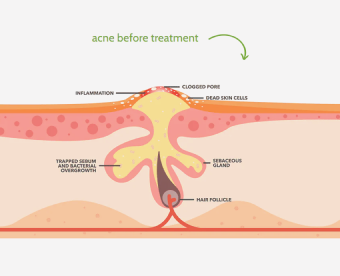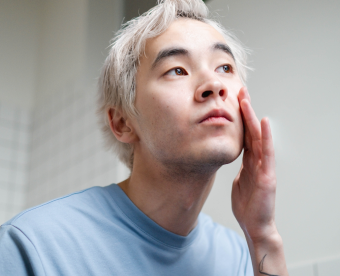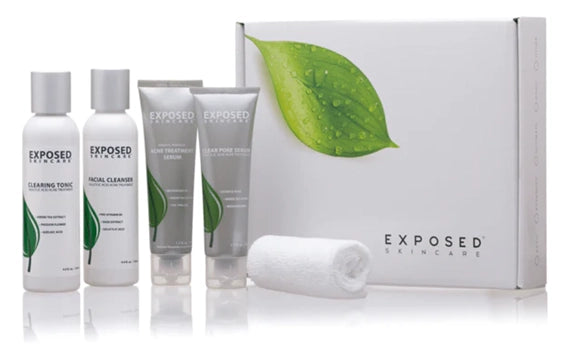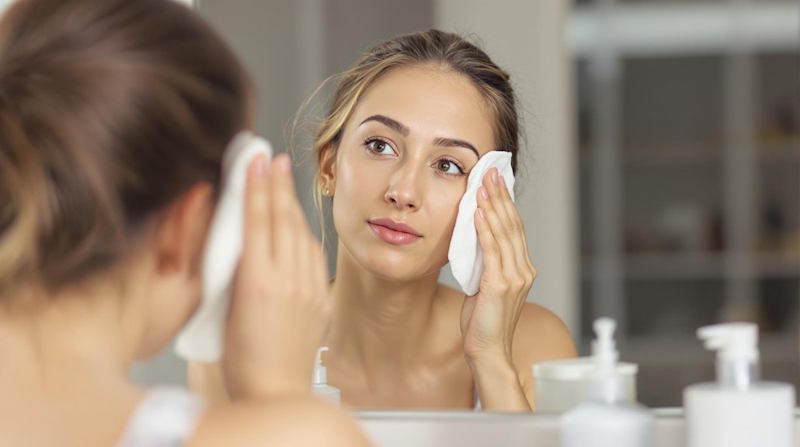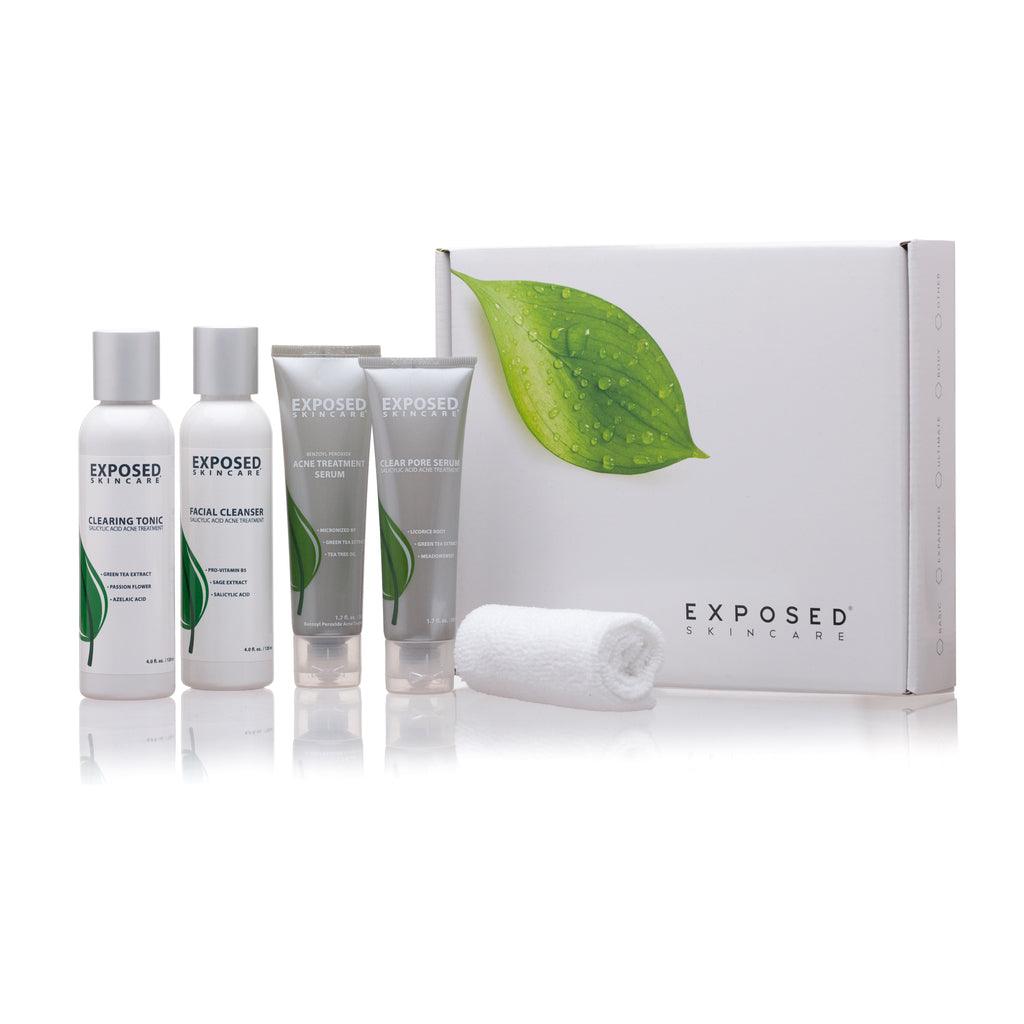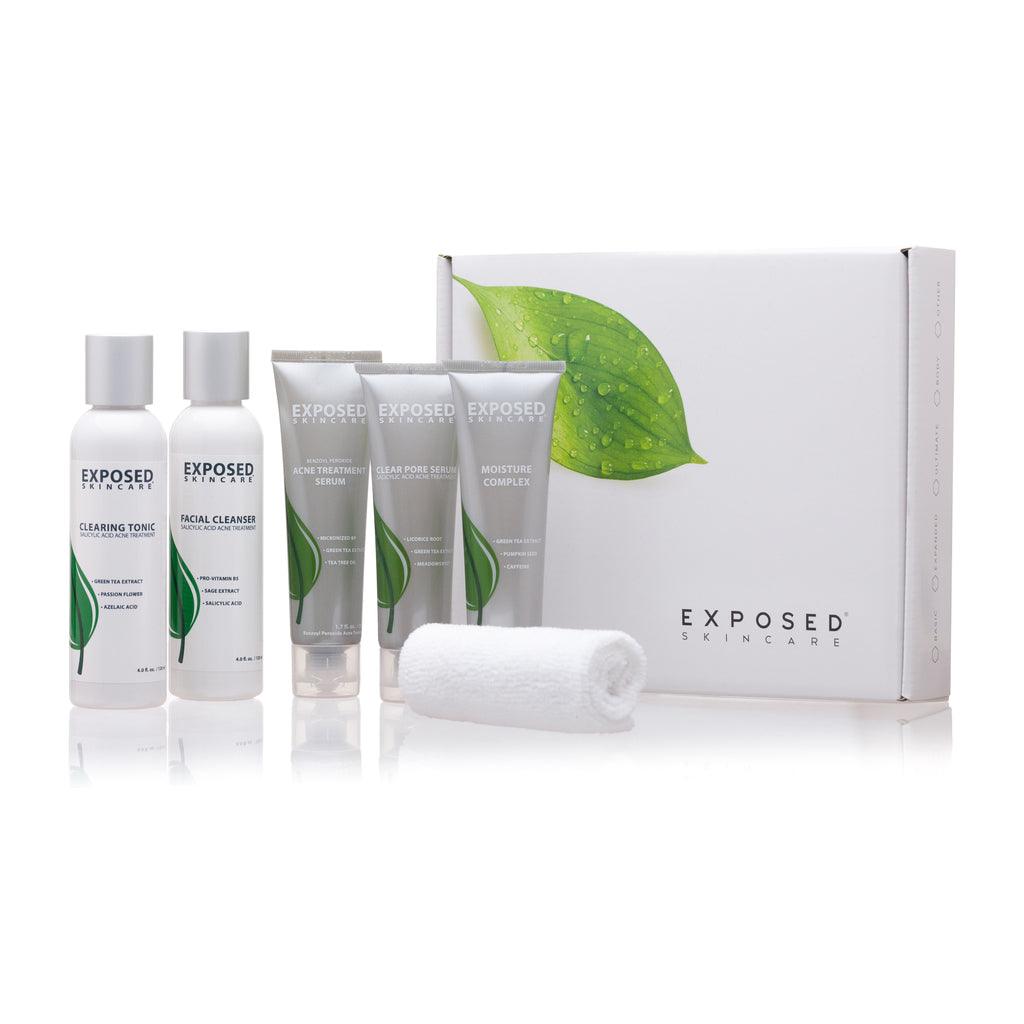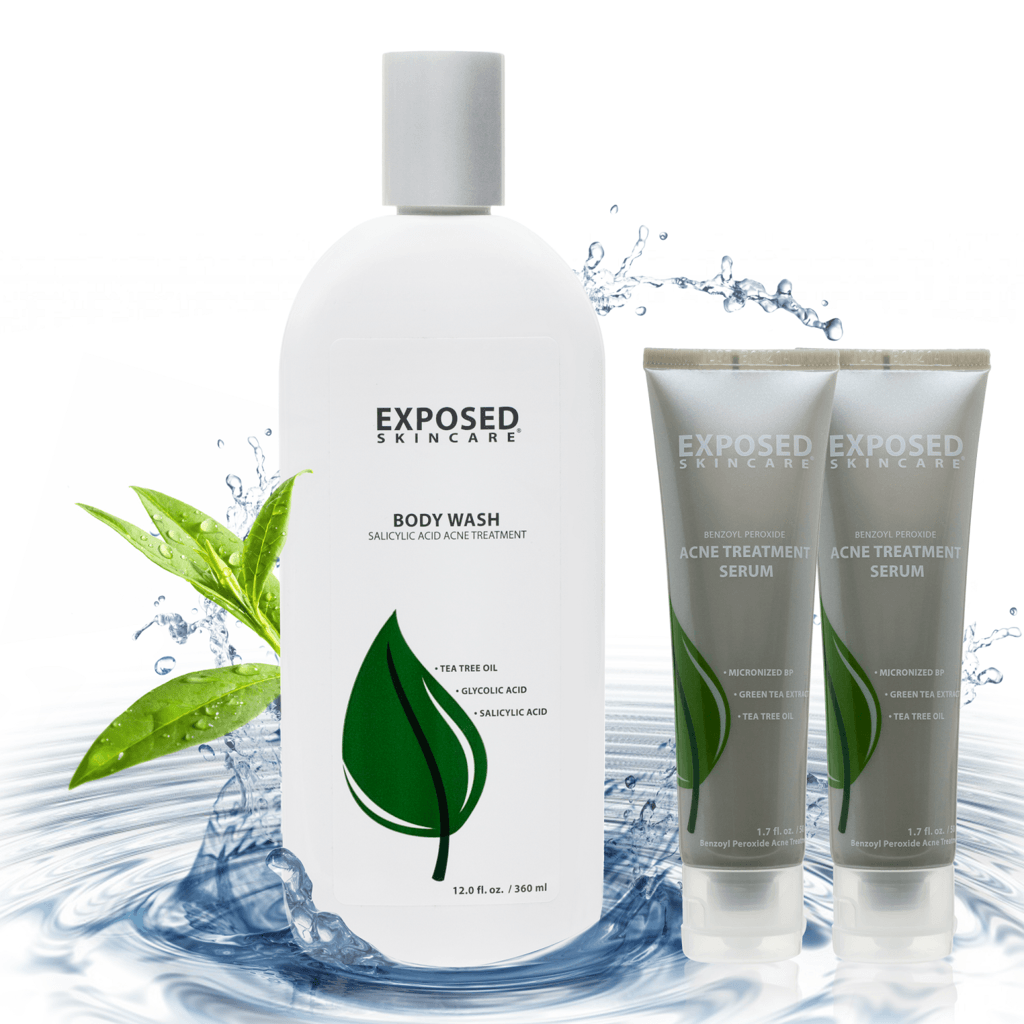Fungal acne, compared to traditional acne, is more elusive, stubborn, and often misunderstood. Yet, salicylic acid has stood the test of time in treating this skin condition. Many ask, "What is the right way of using salicylic acid for fungal acne?"
This blog post aims to unravel this question and guide you through using salicylic acid to treat this form of acne. Explore the science, benefits, and application methods of using salicylic acid for fungal acne.
Also read: How to choose the best acne treatment
Biggest Take-Aways:
- Fungal acne is often caused by yeast overgrowth. It requires specific treatment and differs from bacterial acne.
- Salicylic acid is highly effective in treating bacterial and fungal acne due to its antifungal and exfoliating properties.
- Understanding and balancing the skin's microbiome is crucial in long-term acne treatment and prevention.
- Exposed Skin Care offers a comprehensive range of products formulated to treat various types of acne, including fungal, making it a versatile option in any skincare routine.

What is Fungal Acne?
First things first, let's understand what we are up against. Fungal acne is not like bacterial acne; it is an infection of the hair follicles caused by an overgrowth of yeast. This yeast, specifically Malassezia, is naturally found on the skin but can cause problems when it proliferates excessively.
The Distinct Characteristics of Fungal Acne
- Itchy red bumps, often mistaken for bacterial acne
- Commonly found on the forehead, chest, and back
- It tends to occur in humid climates or among those who sweat profusely
- Doesn't respond well to traditional acne treatments like benzoyl peroxide and antibiotics
How Does Salicylic Acid Come Into Play?
The prowess of salicylic acid is well-established in the skincare industry. It is a beta hydroxy acid (BHA) known for its keratolytic and antifungal properties. These properties make it an ideal candidate for treating not just traditional acne but fungal acne as well.
Why Use Salicylic Acid for Fungal Acne?
- Exfoliates Dead Skin: Salicylic acid is highly effective in breaking down dead skin cells and unclogging pores.
- Antifungal Properties: It disrupts the cell structure of the fungus, inhibiting its growth.
- Controls Oil Production: It helps to control sebum, thereby reducing the environment where yeast thrives.
- Anti-Inflammatory: It helps to reduce redness and inflammation associated with breakouts.
Comparing Salicylic Acid with Other Ingredients
When it comes to acne treatment, many ingredients like benzoyl peroxide, lactic acid, and caprylic acid are commonly used to treat acne bacteria. So, why should one opt for salicylic acid for fungal acne?

- Benzoyl Peroxide and Salicylic Acid: While benzoyl peroxide is an antibacterial agent effective against bacterial acne, it doesn’t necessarily have the antifungal properties to combat fungal acne. Salicylic acid, on the other hand, excels in treating both bacterial and fungal forms of acne.
- Lactic Acid: Lactic acid is an alpha hydroxy acid that is effective in treating bacterial acne but lacks the antifungal properties that salicylic acid possesses.
- Caprylic Acid: Caprylic acid is another ingredient with antifungal properties. However, it doesn't offer the comprehensive benefits of salicylic acid, which include unclogging pores and exfoliating dead skin.
How to Incorporate Salicylic Acid into Your Skincare Routine
Integrating salicylic acid for fungal acne treatment into your skincare routine requires careful consideration. Here’s how you can do it:
Step 1: Choose the Right Product
- Face Wash: A salicylic acid-infused face wash can be a good starting point.
- Topical Solution: Topical creams and serums are more potent and can be applied directly to the affected area.
- Exfoliant: A chemical exfoliant containing salicylic acid can also be beneficial.
Step 2: Conduct a Patch Test
Before fully incorporating it into your skincare routine, always perform a patch test to ensure it doesn't irritate your skin.

Step 3: Application
- Morning Routine: Cleanse your face and apply sunscreen before stepping out. Salicylic acid can make your skin more susceptible to the sun.
- Night Routine: Use salicylic acid face wash and topical solution. If using an exfoliant, limit it to 2-3 times weekly.
Step 4: Monitor and Adjust
Keep an eye on how your skin responds. If you notice excessive dryness or irritation, you may need to adjust the frequency of application.
Common Mistakes to Avoid
When using salicylic acid for fungal acne, there are some common pitfalls that you should steer clear of:
- Overuse: Using salicylic acid too frequently can disrupt the skin’s natural oil production, worsening the problem.
- Ignoring Other Skincare Products: Make sure the other products in your skincare routine are non-comedogenic and free from ingredients that can exacerbate fungal acne.
- Not Using Sunscreen: Failing to use sunscreen can result in further irritation and inflammation, as salicylic acid can make your skin more sensitive to UV rays.

Understanding the Role of the Microbiome
The skin's microbiome plays an essential role in maintaining its health. It consists of bacteria, yeasts, and fungi, including Malassezia, that live on the skin's surface. While salicylic acid can treat fungal acne by targeting yeast overgrowth, it's crucial to balance the microbiome for long-term skin health.
Probiotic Supplements
Consider integrating probiotics into your daily regimen. A healthy gut microbiome can positively impact the microbiome in other parts of your body, including your skin. Probiotics help balance the overgrowth of yeast and bacteria, aiding in acne and fungal acne treatment.
The Benefits of Using Exposed Skin Care to Manage Acne
If you're grappling with acne issues, whether fungal or bacterial, Exposed Skin Care offers an array of products that can make a difference. These products are formulated to tackle the root causes of acne, ranging from hormonal imbalances and bacteria to yeast and fungal infections.
Here are some compelling benefits of Exposed Skin Care:
- Targeted Treatment: Products like the Treatment Serum and Clear Pore Serum are rich in antimicrobial ingredients, perfect for managing both blackheads and whiteheads.
- Salicylic Acid Also Included: Salicylic acid is also a key ingredient in several products for those dealing with stubborn fungal acne.
- No Need for Biopsy: If you struggle to distinguish between acne or fungal acne without a biopsy, these products offer comprehensive care for both.
- Safe for Daily Use: Formulated for daily use, the products work to unclog pores, improve cell turnover, and prevent pore lining from becoming a breeding ground for cysts.
- Over-the-Counter Convenience: With the ease of over-the-counter availability, achieving better-looking skin without needing a GP or oral antibiotics has never been easier.
If you are dealing with acne that doesn’t respond to traditional treatments, Exposed Skin Care brings your skincare has your back.
Conclusion
It is essential to recognize that fungal acne can occur alongside bacterial forms of the condition. The right treatment approach can profoundly impact your quality of life, boosting your skin health and overall well-being.
Salicylic acid has proven to be an incredibly versatile and effective ingredient, particularly when it comes to unclogging pores and reducing the factors contributing to acne. It’s a valuable asset in any skincare regimen to combat bacterial and fungal acne.
Exposed Skin Care offers a range of products incorporating the science-backed benefits of salicylic acid and other potent ingredients. While not the main focus, it's worth considering as part of a comprehensive skincare strategy that aims for treatment and prevention.
In conclusion, treating acne is more than just applying creams; it's a journey of understanding your skin and tailoring your approach to its specific needs. Whether it's bacterial or fungal acne you're up against, knowledge is your most potent weapon.
FAQs
What is fungal acne?
Fungal acne is an infection of the hair follicles caused by an overgrowth of yeast, specifically called Malassezia.
How is fungal acne different from bacterial acne?
Fungal acne often appears as itchy red bumps and is more resistant to traditional acne treatments. It's primarily caused by yeast overgrowth rather than bacteria.
How does salicylic acid help in treating fungal acne?
Salicylic acid possesses antifungal properties and is effective in exfoliating dead skin and unclogging pores, making it useful for treating fungal acne.
Can I use benzoyl peroxide for fungal acne?
Benzoyl peroxide is effective against bacterial acne but not as effective for fungal acne, as it lacks antifungal properties.
What role does the microbiome play in acne?
A balanced microbiome helps control the overgrowth of bacteria and yeast that can cause disease and contribute to acne.
What is Exposed Skin Care?
Exposed Skin Care is a skincare line offering products that effectively treat bacterial and fungal acne, with key ingredients like salicylic acid.

